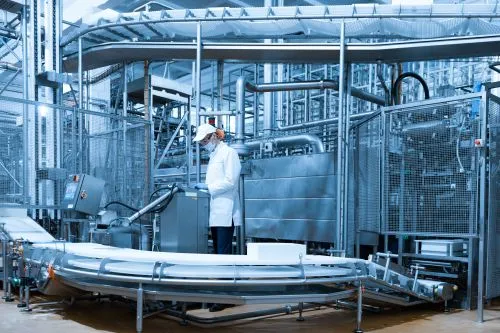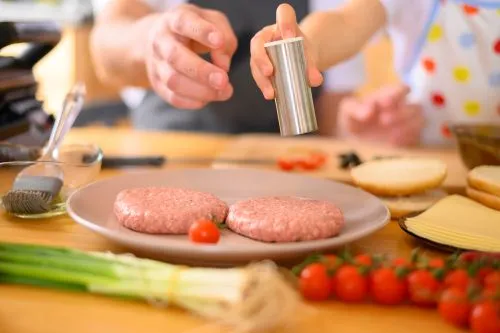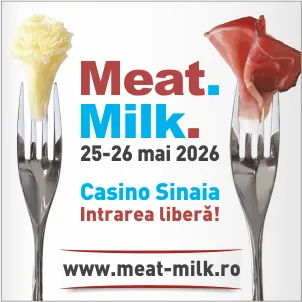
Consequence of globalization, production and manufacture of meat is in a state of dynamic innovation. On the one hand, consumers demand high quality products and newer, products that are "clean labeled", with natural aroma and taste. On the other hand, processors want to reduce the production costs. A solution can be the high pressure meat processing technology. Although, still expensive, in the future it adoption can mean being successful in a market increasingly competitive / To describe it briefly, we quote the study "New technologies for meat processing: high pressure technology model" developed by M. Hugas, M. Garriga, J.M. Monfort, from the Meat Technology Center of the Institute for Food and Agricultural Research in Spain and published by Elsevier Science Ltd. Harmonization of interests From the start, processors and consumers' interests are antagonistic: the first want to produce cheap and to sell at profit, and the others desire meat quality products at prices as low as possible. To harmonize the interests, researchers from the field of meat processing come, at least in the stage of product preservation, with the solution of high-pressure technology HHP, more precisely, high hydrostatic technology. In fact, this method is a non-thermal action on meat products, the ultimate goal being to avoid their contamination in the post-processing phase, when, the bacteria caused by the rate of meat cells death are combined with anti-microbial substances, which, not always ensure a quality product and more than that, food safety. By using this technology, risks of Salmonella and Listeria monocytogenes are well controlled, especially for raw meat or meat marinades. Meanwhile, HHP technology significantly extends the validity of the food products, by carefully controlling the growth of pathogenic bacteria that can lead to spoilage of meat. The treatment may be applied to pork boiled ham, pork dried bacon, marinated beef tenderloins treated at a pressure of 600 MPa, for a period of time ranging from 10 to 30 minutes. A clear advantage of HHP technology is preserving the natural qualities of the flesh and of the final product and the exclusion of additives such as preservatives and humectants from the recipes. Obviously, the mere review of these advantages lead to the conclusion that the processors' and consumers' interests converge, especially at this stage, when HHP solution leads to serious savings on energy costs, as well as their reduction by eliminating the additives. Thus, consumers will have a product with a long shelf life greatly improved, certainly in terms of nutrition, natural aspect, with excellent taste and at a considerably lower price. Added that the processing of meat products at high pressure requires at the end, their packaging in vacuum. Many called, few chosen Of course, there are many other alternative solutions for meat processing, solutions that meet the needs of cost reduction, food security, responding to the latest principles of environmental compliance just that, according to the saying, many are called but few are chosen, so not all solutions are really economical and efficient. A good example can be the meat irradiation with gamma rays, solution about our magazine wrote in a previous edition. But radiation even though provides a very good decontamination of meat has a very low acceptable level from consumers. Other technologies, somewhat similar, that are applied in the conservation phase of the product are applicable to small productions, and are therefore uneconomical. Moreover, even if they use very little power and are environmentally friendly, this does not solve the harmful action of pathogens or spoilage microorganisms. One of the research relates to the treatment of meat in oscillating magnetic fields (CID) but so far, has not reached conclusive results. However, there are several technologies that can be considered both economical and safe with great potential in meat processing. One of them is CHE technology for processing at high-pressure which is controlled by the instantaneous decompression (DIC) in a pulsed high-intensity magnetic field by 'resistive' heating, dielectric heating or under microwave flow. Another technology uses changes in light intensity and the X-ray, and the so-called "electronic beams". Currently, electron fascicle irradiation, combined with HHP technology offers real possibilities for their use on high production flows for both meat products and by-products. However, the solution presented here is perfectly suited for the decontamination of surfaces and packaging materials. HHPprocessing of sliced and cured products CHE technology presented briefly above, it is very promising for processing and, in particular, for the preservation of meat sliced products, as well for cured products, the more that requires a relatively low energy consumption. The processing itself uses a high isostatic pressure, between 100 and 600 MPa at ambient temperature. The pressure chamber is loaded, sealed, degassed and pressurized with the help of pumps, pressurizing agent is generally water. The technology is based on the principle of Le Chatelier and the isostatic technology, so the treatment is instantly applied uniformly to all constituents. Volume changes which are accelerated by HPP technology lead to a change at the molecular level, which causes changes in microorganisms, causing destruction or inactivation of microbial vegetative and enzymatic cells without alter the organoleptic characteristics of the product and leaving the vitamins intact. However, given that the resistance of the microorganisms has a great variation, depending on the meat recipe and of the meat used, it cannot be established a standard matrix, the effectiveness of treatment depending on the pressure created, the temperature level and time of exposure. HPP treatment and new product development Given that the HPP technology can induce special effects in the texture and structure of the constituent raw materials, it can be used to develop new products, and to increase the functionality of ingredients. Therefore, experimental areas within research and development laboratories may include the developing of the best and most effective HPP treatment, and the presentation of the product, by combining this solution with new packaging systems, making a clear advantage and adding value to the natural antimicrobials, to the enzyme cocktails etc. In addition, promising is also the development of new meat product by cold gelation of the starch and non-termic protein coagulation, as well as selective inactivation of the enzyme. Currently, the best known companies in Europe that use this technology are Esteban Espun SA and Campofrio Alimentacion SA, in Spain, and Hormel Foods and Purdue Farms, United States. Among HHP or CHE technology providers we remind Flow International, ACB Pressure and Hyperbaric, from France, Korea, Spain and United States. High performance comes from the USA, via Sweden Moreover, the company Avure-USA is the most powerful in the world. With an experience of more than 50 years, Americans can provide the most advanced meat treatment equipment suitable for HHP technology, available in Europe, through its subsidiary in Sweden. The latest achievements of Americans refers to ready meal meat products, and exceptional performance refers to increasing the shelf life of meat products (such as Ham) up to 180 days without using any preservative . The technology has been proven by both U.S. and Canadian federal agencies for food safety and EU authorities. American HPP systems from Avure involve products exposure to the pressures generated by HHP at values of 600 MPa/ 87 000 psi, thereby ensuring the inactivation of pathogens that can cause food poisoning, keeping intact the natural properties of meat and organoleptic qualities of the product . The equipment is suitable for both large production lines and small processors or even crafted groceries. Avure solution can be applied with great success for both boiled products (hams) and boiled, dried or raw-dried saudages, their sensory qualities such as texture, color and nutritional content keeping them intact for a long time. In addition, while the elimination of chemicals, the validity of the meat is increased by three times, for example, a product with a deadline of 30 days, it was increased to 90 days. Depending on variety, the term may be extended up to 180 days. Taking into account the conditions imposed by the efficient usage of distribution channels, the large retail network claims and, in particular, the requirements of increasingly demanding consumers with less and less income available, all these are advantages which in time can be crucial in ensuring the success of a company on the market, despite the serious costs involved in investing in such technology.





